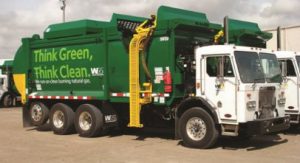Pragmatism: (noun)
a reasonable and logical way of doing things or of thinking about problems that is based on dealing with specific situations instead of on ideas and theories
–Merriam-Webster
 Advanced, alternative fuel vehicles face the challenges of any new technology – overcoming ignorance and resistance to change. The past four years have witnessed positive, impressive numbers in US sales of electric vehicles (EVs) and breakthroughs in new vehicles and fueling infrastructure for natural gas, propane, and hydrogen. It is going to take a while to see sales increase substantially, and charging and alternative fueling stations to become commonplace.
Advanced, alternative fuel vehicles face the challenges of any new technology – overcoming ignorance and resistance to change. The past four years have witnessed positive, impressive numbers in US sales of electric vehicles (EVs) and breakthroughs in new vehicles and fueling infrastructure for natural gas, propane, and hydrogen. It is going to take a while to see sales increase substantially, and charging and alternative fueling stations to become commonplace.
All that being said, there are green vehicles seeing sales growth; and solid steps are being taken in government and corporate policies embracing alternative fuels and clean transportation. Fleet managers are bringing in more alternative fuel vehicles and doing the numbers on lifecycle cost comparisons; consumers are looking into deals on EVs, or trying out their first diesel, hybrid, or natural gas vehicles (NGVs). Corporate sustainability programs are including clean transportation targets more often lately. They seem to value clean transportation meeting a few of their goals – reducing emissions and petroleum consumption, offering more energy independence, and contributing to domestic economic gains. They do see it as a pragmatic alternative.
What seems to be working? Pragmatic messages seem to be clicking with shoppers and buyers:
- You get to drive by gas stations while smiling big – the original Nissan Leaf and Chevrolet Volt ads played on these messages, and you can still see it in TV commercials for new EVs.
- You could also pull up into a gas station and have more options – buying less fuel, choosing biodiesel or ethanol, and eventually even more – hydrogen, methanol, natural gas, and maybe even an EV fast charger; as mentioned in the upcoming film, “Pump.”
- Lifecycle ownership cost savings – this big question is still being worked out. What does it cost for a fleet to convert over to natural gas or propane compared to gasoline and diesel engine vehicles? How long until the acquisition cost evens out? There’s always the question of how long incentives will last, how many charging and fueling stations there are – or the cost of having one installed on your property. But it is a tipping point that’s taken seriously in electric, CNG, propane, hybrid, and flex-fuel vehicle options for fleets and consumers. Hydrogen fuel cell vehicles have a big challenge here, but their pricing is starting to come down; and per gallon equivalent pricing on hydrogen will be released in the near future by government agencies. Rising gasoline prices always help tip the scale to green vehicle, but the prices are probably not going to be spiking up substantially anytime soon. Finding other analytics and messages makes a lot of sense.
- Reducing greenhouse gas/carbon emissions – that’s becoming the widely accepted global tracking standard, whether or not the policy is based on the climate change/global warming issue or if its primarily a logical, accepted standard. It’s becoming the broad standard that encapsulates air pollution, smog, carbon, and other pollutants. The advantage coming from GHG/carbon emissions as the standard is that you can reduce your emissions several ways – purchasing EVs, natural gas, or other alternative fuel vehicles; buying more fuel efficient vehicles and hybrids; driving less and using carsharing and ridesharing services; using stop-start technologies and reducing driver idle time; or some combination of methods. That’s good news for those concerned about emissions, or who are being directed by their employers to reduce vehicle emissions.
- Connectivity to mobile devices, dashboards and WiFi, and to “the internet of things.” A good example being Android Auto, which offers a simple and intuitive interface, integrated steering wheel controls, and powerful new voice actions designed to minimize distraction and keep the driver focused on the road. Automakers and technology suppliers are integrating safety systems that are considered a stepping stone toward autonomous vehicles. It also brings more simplicity to drivers. They can find charging stations, NGV stations, schedule maintenance, and use carsharing and ridesharing services – all from their mobile device integrated into their dashboard.
- Economic development and job creation. If you’re looking for perspectives on this issue, ask a venture capital executive; or a good number of automotive executives, military officers; scientists, college students, and young professionals. Many people see clean transportation as a pragmatic, win-win scenario, meeting economic and environmental targets. There are significant job announcements, as reported by Environmental Entrepreneurs. Another sustainability organization, Ceres, has always supported federal mpg standards as a vital catalyst for reducing fuel consumption and emissions and creating more jobs.
- The US has a strong platform for capitalizing on technology innovations – with examples being Tesla Motors and its Model S and the “Gigafactory;” General Motors research centers, Ford’s personal mobility campaign; automaker sustainability and water conservation campaigns, such as Ford’s Oakville Assembly plant sending zero waste to landfill; and EVs, hybrids, NGVs, propane, hydrogen, and advanced biofuels seeing increasing signs of acceptance and support.



